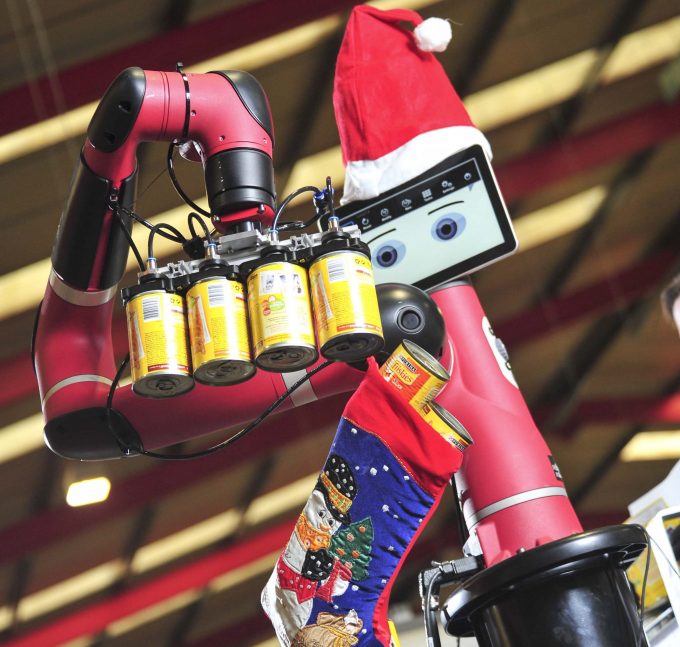Source: Rethink Robotics

DHL employees may be getting an unusual Christmas present, following the European trial of “collaborative” warehouse robots.
Supplied by Rethink Robotics, Sawyer and Baxter are warehouse robots being trialled across the continent on tasks including assembly, kitting, packaging and pre-retail services.
A spokesperson for DHL told The Loadstar this morning that the robots would work alongside, rather than replace, staff in improving efficiencies across the supply chain.
“Looking and talking about how new technologies can be applied in our dynamic industry is part of DHL’s responsibility as industry leader. How these are applied, and how they support and work alongside humans across the supply chain are key to our research.
“Far from replacing people, we are looking into how robots can support our employees and where it makes sense for humans and machines to work together.”
However, Matthias Heutger, senior vice president for strategy, marketing and innovation at DHL Customer Solutions & Innovation, said that, historically, industrial robots had failed to integrate in distribution practices as they struggled with variability.
“In our recently published report, Robotics in Logistics, we found that 80% of logistics facilities today are still manual due to the complexity of the operations,” said Mr Heutger. “As technology improves, however, the logistics industry is benefiting from the adoption of collaborative robots to improve efficiency.”
The test period will determine how best DHL can integrate robots into its global operations.
The firm has already purchased its first robot, to research its adaptability to 3D printing tasks and the possibility of creating specialised grippers to allow further warehouse tasks to be undertaken by robots.
Adrian Kumar, vice president of solutions design North America at DHL Supply Chain, said Sawyer and Baxter were among the most advanced on the market, adding that the firm planned to deploy them in a variety of packaging and inventory tasks. This, he said, would free up human employees for higher-value work.
“By deploying these robots to work in tandem with humans, we can ensure our production lines are adjusting to changes and running more efficiently year-round,” added Mr Kumar.

